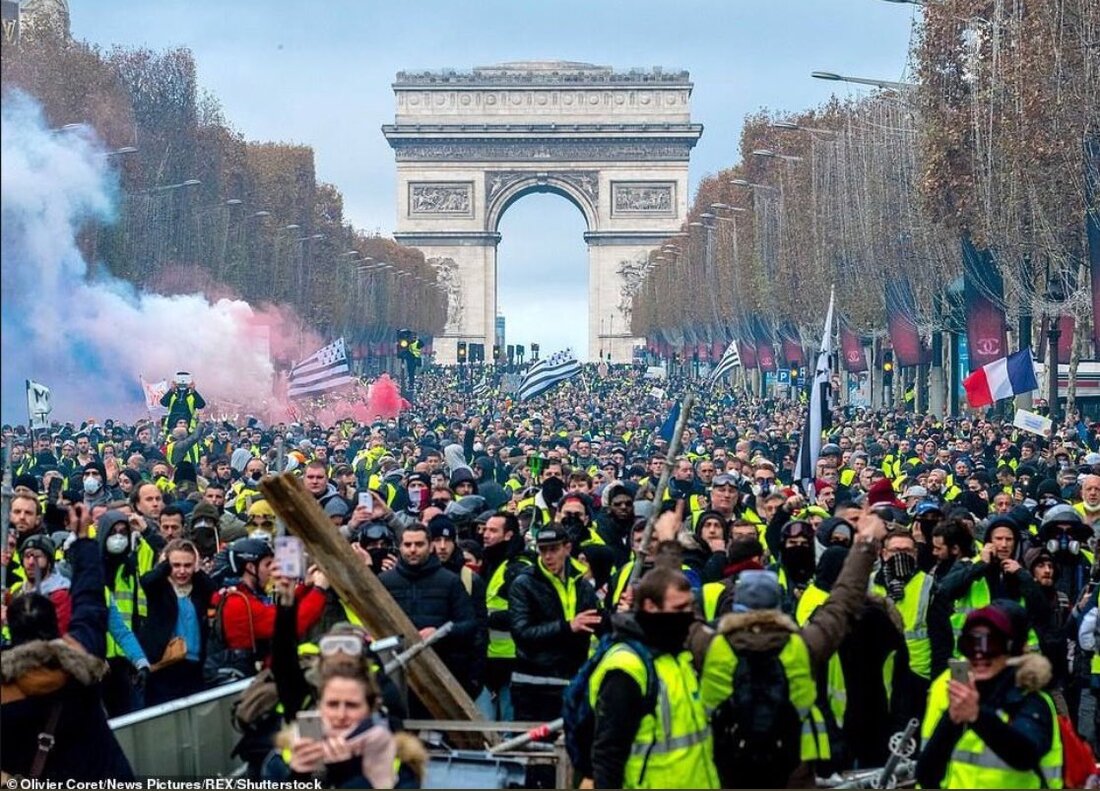|
With 300,000 people taking to the streets across France in November of last year, the Gilets Jaunes have maintained their struggle in to the spring of 2019. Started as a response to an increase in fuel tax, the yellow-vested protesters have blockaded roads and fuel depots and been subject to considerable police violence.
Beyond calling for lower fuel tariffs, some Yellow Vests have supported increased minimum wage and an end to austerity, while others have opposed taxation (including welfare contributions), with all united under demands for president Macron’s resignation. If that sounds like a real melange of aims – some of which benefit the working class, and some of which don’t – well, yeah it is! Though predominantly workers, the movement also includes bosses and employers, as well as outright fascist and even monarchist (yes, really) groups. So, while on some occasions known fascists have found their fellow Vests turning on them and throwing them out of demonstrations, vest-clad crowds have been proudly waving French flags and in some cases, banners displaying anti-semitic slogans. Such flag worship promotes false unity between the nation's workers and their rulers, whilst dividing them from other exploited workers within the movement and across the globe. A spontaneous mass movement such as this naturally involves all manner of people, and hence a variety of differing politics, ideas and aims. Racists and nationalists undermine radical and progressive elements, sowing division within the movement, while bosses cannibalise and co-opt demonstrations for their own ends, destined to betray the workers in the fullness of time (in this case by pushing protestors to disband once they realised their profits were in jeopardy). This is to be expected because bosses have different interests to those of workers, fighting always for the interests of the Capitalist class. These contradictions, which undermine the potential of the Yellow Vest movement, emerge from the lack of a coherent class consciousness. In common with workers of all nations, the French working class have varying degrees of awareness of their exploitation by the bourgeois state, as the ruling class drown out revolutionary ideologies with those more sympathetic to their own interests. The takeaway for us in the UK, therefore, is clear: we have to be vigilant in our efforts to develop real class-consciousness, in our communities and in our workplaces. When those foundations have been laid, movements like the Yellow Vests could unite behind goals that represent actual progress for the class. For the organised left, of course, there’s another lesson: don’t abandon the movement to the right wing! As the Vests show, far-right elements introduce bigotry and division, undermining the goals of what could be a movement with change-making potential (...it’s worth mentioning that the copycat Yellow Vest actions in the UK have been nothing but a right-wing pantomime). A spontaneous movement, with anti-government and anti-neoliberal leanings, the Yellow Vests movement might provide some example to workers this side of the channel. But to do so, the movement most progress beyond populism and contradiction. Freedom from the manipulation of opportunistic “leaders” is good, but that shouldn’t preclude accountability and the building of democratic decision making structures. As it stands, whatever figureheads emerge have no responsibility to the movement at large, and can be easily co-opted into the existing establishment. Forming assemblies to hammer out common goals and sideline Fascists, and choosing accountable, recallable delegates to represent it to the media and in negotiations would go a long way to democratising the movement, putting power firmly in the hands of the workers, and taking it that much closer to becoming an effective vehicle for class struggle.
0 Comments
Leave a Reply. |
The Rag
Archives of print news from The Rag, newspaper of the Revolutionary Anarchist Group, Birmingham Archives
May 2024
Categories
All
|


 RSS Feed
RSS Feed
